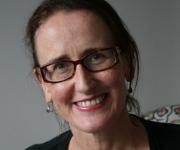IN 1860, the editor of the Australian Medical Journal had this to say about women who wanted to become doctors: “… a woman who voluntarily devotes herself to a state in which the abandonment of the domestic qualification seems a necessity, is a being whom men do not love and with whom women can hardly sympathise…”
He would have been appalled by contemporary Australia, where women account for about 57% of new medical graduates.
The centenary International Women’s Day last week prompted some national soul searching about the abysmally low proportion of women on corporate boards, including in the health care sector.
An article in the Sydney Morning Herald pointed out that the country’s largest operator of private hospitals, Ramsay Health Care, did not have a single woman on its board, despite having a workforce that was 84% female.
Fortunately, the medical profession has a somewhat better record when it comes to women in leadership positions, whether it’s female university professors or presidents of the AMA.
But the so-called “feminisation” of the profession has not been evenly spread across specialties.
The most recent report of the Medical Training Review Panel shows that in 2008 women accounted for more than half of new fellows in paediatrics, obstetrics and gynaecology, and rehabilitation medicine.
At the extremes, women made up a whopping 91% of new dermatologists but only 9% of new fellows in pain medicine (although admittedly total numbers in both specialities were small).
Does it matter that only 15% of newly qualified surgeons were female? Well, yes, it probably does.
There might be an argument for male dominance in urology and female dominance in gynaecology, but in most specialties a balance between the sexes would seem likely to promote a better work culture — and you might expect that to be conducive to better outcomes for patients.
And it works both ways. The increasing feminisation of general practice could in the future mean there is a need to look at ways of making that specialty more “male friendly”.
Although the sex ratio of new GPs varies from year to year, the University of Sydney’s General Practice Activity in Australia report has identified a feminising trend. It showed 44% of GPs surveyed in 2009–10 were female, up from 32% a decade earlier.
Australian General Practice and Training also reports a growing number of female doctors, with women making up 65% of registrars in the AGPT program in 2011.
With the gender balance in general practice not yet at parity, it might seem premature to be worried about a potential future female “dominance” of the profession.
But, although today’s female doctors have proved that 19th-century editorialist wrong on all counts, it doesn’t mean they will always be the preferred choice of male patients.
We wouldn’t want to find that a shortage of male GPs in the future inadvertently compounds men’s notorious reluctance to seek medical attention.
Jane McCredie is a Sydney-based science and medicine writer, and author of Making girls and boys: inside the science of sex, published by UNSW Press.
Posted 14 March 2011

 more_vert
more_vert